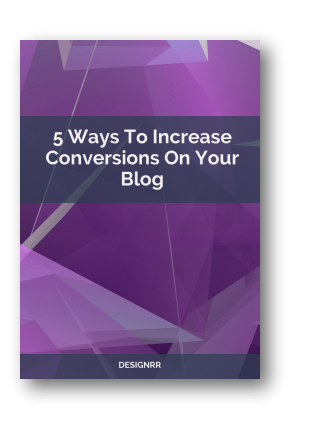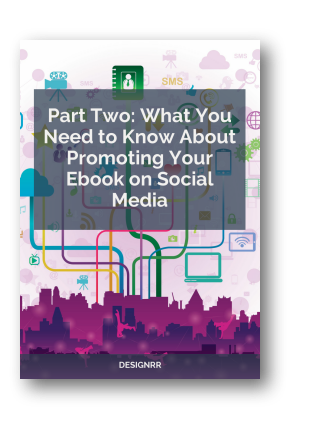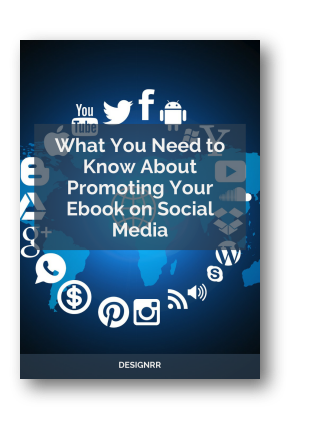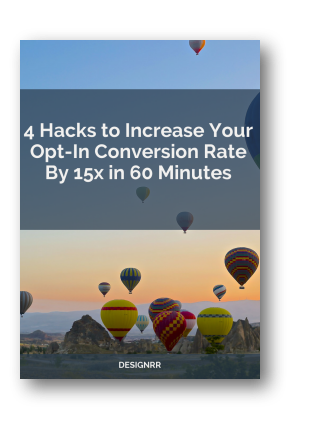AI writing tools are rapidly changing the world of content creation. These tools offer remarkable speed and the ability to generate starting points for your writing. But can you simply rely on AI to write your entire ebook? Not quite. AI-generated content needs careful review and thoughtful editing to ensure it reaches its full potential for your readers.
Here’s a guide on how to transform AI-generated content into a high-quality, engaging ebook:
1. Fact-Checking and Accuracy:

AI models are trained on massive datasets, but that doesn’t make them infallible. Errors in statistics, historical details, technical information, or specialized knowledge can undermine your credibility and reader trust. Therefore, it’s crucial to always fact-check the information generated by AI tools.
Tip: Double-check everything, especially if the AI tool seems overly confident. If unsure, consult reliable sources and experts in your field. It’s better to spend time verifying information than to risk publishing inaccurate content.
2. Refining for Your Voice and Style:

Your ebook should have a consistent tone and style that reflects your brand or personality. AI-generated text may be generic or lack your distinctive touch. Here are some ways to refine the AI-generated text to infuse your writing with your own voice:
Word Choice:
- Swap out bland or overly-formal words for vocabulary that resonates with you and your audience.
- Replace jargon and technical terms with simpler, more relatable language.
- Use evocative and descriptive words to paint a vivid picture in the reader’s mind.
- Avoid using the same words repeatedly; mix it up to keep your writing interesting.
Sentence Structure:
- Adjust long, complex AI-generated sentences for better readability. Break them down into shorter, more digestible chunks.
- Vary the sentence structure to create a more natural flow.
- Experiment with different sentence types, including simple, compound, complex, and compound-complex sentences.
- Use punctuation correctly to add clarity and emphasis to your writing.
Tone and Style:
- Determine the overall tone you want to convey: informative, persuasive, humorous, or something else.
- Maintain a consistent tone throughout your ebook.
- Develop a unique writing style that sets your work apart from others.
- Incorporate your personal experiences, anecdotes, and insights to make your writing more engaging and relatable.
Humor and Personalization:
- If appropriate, inject humor, anecdotes, or examples that only you could provide.
- Share your unique perspective and insights to make your writing more compelling.
- Use storytelling techniques to captivate your readers and keep them turning the pages.
- Address your readers directly to create a sense of intimacy and connection.
By refining the AI-generated text, you can create an ebook that is both informative and engaging, and that truly reflects your unique voice and style.
3. Enhancing Clarity and Readability

Working with AI-generated content presents unique challenges, one of which is ensuring clarity, conciseness, and readability. AI tools may sometimes produce convoluted or awkward sentences, making it difficult for readers to grasp the intended message. As a human editor, it falls upon you to ensure the content flows smoothly and is easily comprehensible. Here are some strategies to enhance clarity and readability:
- Simplify: Break down complex paragraphs into shorter, more digestible sentences. This makes the content easier to read and understand, particularly for readers who are quickly scanning the text.
- Add Transitions: Use transitional words such as “therefore,” “however,” or “additionally” to guide the reader through your logical progression. Transitions help connect your ideas and create a smooth flow in the content.
- Use Active Voice: Opt for active voice over passive voice. Active voice makes the subject of the sentence the doer of the action, leading to more concise and engaging writing.
- Eliminate Jargon and Technical Terms: Avoid using jargon or technical terms that might not be familiar to your audience. If you must use specialized language, provide clear explanations or definitions.
- Read Aloud: Read your work aloud to identify clunky phrasing or unnatural-sounding sections. This is an effective method to pinpoint areas that require improvement.
4. Eliminating Repetitiveness and Fluff

AI-generated content can often suffer from repetitiveness and fluff, which can make it boring and difficult to read. This is because AI tools can get stuck in a rut, repeating concepts or using unnecessary phrases. To eliminate repetitiveness and fluff, it’s important to cut out the filler and streamline your ebook for impact. Here are some tips:
- Vary Sentence Openings: Look for repetitive phrases like “One important thing…” or “It’s crucial to…” and change them up for better flow. For example, instead of saying “One important thing to remember is that AI can be biased,” you could say “It’s important to be aware that AI can be biased.”
- Remove Filler Words: Eliminate unnecessary words like “very,” “just,” and “really”. These words don’t add any meaning to your content and can make it sound cluttered. For example, instead of saying “AI can be very helpful,” you could say “AI can be helpful.”
- Combine Sentences: Look for opportunities to combine two or more short sentences into one longer, more cohesive sentence. This will help to reduce repetitiveness and make your content more concise. For example, instead of saying “AI can be used for a variety of tasks. These tasks include customer service, data analysis, and fraud detection,” you could say “AI can be used for a variety of tasks, including customer service, data analysis, and fraud detection.”
Some of the proofreading tools can help remove unnecessary phrases.
5. Addressing Originality Concerns:

Creating an ebook that stands out and captures readers’ attention requires a blend of originality, fresh perspectives, and engaging content. Here are some strategies to enhance the impact of your ebook:
Your Expertise:
- Real-Life Examples: Share compelling stories, case studies, and examples from your own experiences or those of others to illustrate your points and make them relatable.
- Expert Insights: Incorporate interviews or quotes from industry experts, thought leaders, or respected figures in your field. This adds credibility and authority to your content.
- Research and Data: Back up your claims with relevant statistics, research findings, and data. This enhances the trustworthiness of your ebook and provides a solid foundation for your arguments.
Counterarguments:
- Anticipate Objections: Consider potential objections or counterarguments readers may have and address them proactively. This demonstrates your understanding of different perspectives and strengthens your position.
- Balanced Presentation: Present a balanced viewpoint by acknowledging alternative perspectives and viewpoints. This shows your objectivity and encourages readers to engage in critical thinking.
- Constructive Responses: Offer well-reasoned and thoughtful responses to counterarguments, showing respect for differing opinions and providing a nuanced understanding of the topic.
Creative Flair:
- Visual Elements: Incorporate visually appealing elements such as images, infographics, and charts to enhance the reader’s experience and make complex information more accessible.
- Storytelling: Employ storytelling techniques to captivate readers and create an immersive experience. Share personal anecdotes, historical accounts, or fictional scenarios that relate to the topic.
- Humor and Wit: Infuse your writing with humor, wit, or wordplay to make it more engaging and enjoyable to read. This can help break up dense content and create a connection with readers.
6. SEO Optimization (If Relevant):

If you intend for your ebook to be discoverable online, optimizing it for search engines is essential. While AI tools can provide a solid foundation, it’s crucial to integrate keywords strategically and naturally. Here’s how:
Research:
- Conduct thorough keyword research using tools and analytics to identify the terms your target audience is searching for.
- Prioritize long-tail keywords over generic ones, as they tend to have lower competition and higher conversion rates.
Natural Integration:
- Incorporate keywords in the title, headings, and subheadings in a way that flows naturally with the content.
- Avoid keyword stuffing, as it can negatively impact your search engine rankings and reader experience.
- Use keywords in the introduction, body, and conclusion, ensuring they fit seamlessly within the context.
Harness the Power of AI Responsibly
AI writing tools are incredibly valuable resources that can save significant time and effort. However, it’s important to use these tools responsibly and effectively to ensure that the output is accurate, engaging, and representative of your unique voice. By following these editing steps, you can transform AI-generated text into a high-quality ebook that meets your standards.
The Importance of a Human Editor

While AI tools can generate impressive results, they still fall short of human judgment and creativity. They may struggle with subtle humor, complex emotional arguments, or establishing a truly distinctive writing voice. A skilled human editor is essential to ensure that your ebook doesn’t sound robotic or generic. A human editor can identify issues with flow, spot awkward word choices, and make sure that your personality shines through the text.
Example of an Editing Process
Let’s take a sample paragraph generated by an AI tool:
Original: “One of the primary benefits of social media marketing is the ability to reach a vast audience with targeted messaging. Social media platforms provide sophisticated tools for pinpointing specific demographics based on interests, location, and online behavior.”
Edited: “Social media marketing gives you a unique advantage: you can laser-target your ideal customers. Want to reach women in their 30s who love yoga and live in Seattle? Social media lets you do exactly that, so your messages land on the right screens.”
The edited version has several improvements:
- Conversational Tone: The edited text feels more like a friend giving advice, rather than a textbook definition.
- Specificity: Replacing “vast audience” with a specific example makes the point stronger.
- Brevity: Extra phrases like “one of the primary benefits” are removed for better flow.
Plagiarism Concerns
AI models are trained on vast amounts of existing text, and there’s a risk that they may replicate phrases or ideas found in their training data. This can lead to plagiarism concerns, especially if the AI-generated content is not properly edited and attributed.
To avoid plagiarism, it’s important to use AI responsibly and ethically. Here are some tips:
- Always cite your sources, even if the information came from an AI model.
- Paraphrase and rewrite the AI-generated content to make it your own.
- Add your own unique insights and perspectives to the content.
- Use a plagiarism checker to make sure your final draft is original.
Ethics and Best Practices

In addition to plagiarism concerns, there are also ethical considerations to keep in mind when using AI for content creation. Here are some best practices:
- Be Transparent with Your Audience:
- Clearly disclose to your audience that you have used AI tools to create the content.
- Provide information about the specific AI tools you have used and the role they played in the content creation process.
- Explain why you chose to use AI and how it has enhanced or improved the content.
- Use AI Responsibly and Ethically:
- Avoid using AI to create content that is misleading, deceptive, or harmful.
- Ensure that the content you create is accurate, fair, and unbiased.
- Respect the privacy of individuals and organizations mentioned in your content.
- Consider the potential impact of your content on society and the environment.
- Don’t Use AI to Create Deceptive or Harmful Content:
- Refrain from using AI to create content that is designed to mislead or manipulate your audience.
- Avoid creating content that promotes violence, hate speech, or discrimination.
- Do not use AI to generate fake news or spread misinformation.
- Respect Copyright Laws:
- Ensure that you have the necessary rights and permissions to use any copyrighted material in your content.
- Do not use AI to create content that infringes on the intellectual property of others.
- Give proper credit and attribution to the original creators of any content you use.
- Stay Informed About AI Developments:
- Keep yourself updated on the latest developments in AI technology and its ethical implications.
- Engage in discussions about the ethical use of AI and contribute to the development of best practices.
- Seek guidance from experts in the field of AI ethics when necessary.
- Consider the Long-Term Impact of AI:
- Think about the long-term consequences of your use of AI for content creation.
- Consider how your actions might contribute to the development and perception of AI in society.
- Strive to use AI in a way that promotes trust, transparency, and accountability.
By following these ethical guidelines, you can use AI to create high-quality content that is both original and engaging.
Specific AI Tools

Here are a few popular AI writing tools that can be helpful for ebook creation:
Jasper (formerly Jarvis): A well-rounded tool that can handle blog posts, social media blurbs, and longer-form content like ebooks. It offers numerous templates and modes to spark inspiration.
Sudowrite: Helps fiction authors brainstorm plot points, overcome writer’s block, and create realistic dialogue
Designrr.io: A cloud-based design platform that can help you create professional-looking ebooks, reports, and other marketing materials. It offers a variety of templates and tools that make it easy to create visually appealing content. For an all-in-one ebook creator, this would be the one!
These are just a few of the many AI writing tools available. When choosing a tool, it’s important to consider your specific needs and budget. Some tools are better suited for certain types of writing than others. It’s also a good idea to try out a few different tools before making a decision.
Check out are AI writing tools list!
Conclusion
When utilizing artificial intelligence tools for creative endeavors, thoughtful editing becomes paramount. While these tools can provide a wealth of options and assistance, the ultimate goal is to maintain a sense of authenticity and personal expression in the final product. Here’s why prioritizing thoughtful editing is crucial:
- Personal Style: AI tools often generate content based on patterns and probabilities, which may result in a generic or impersonal tone. Thoughtful editing allows you to incorporate your unique voice, style, and perspective into the output.
- Contextual Accuracy: AI-generated content may not always accurately capture the context or nuances of your intended message. Editing enables you to ensure that the content aligns with your specific goals, target audience, and overall tone.
- Error Detection: AI tools are not immune to errors or inconsistencies. Editing allows you to identify and correct any factual errors, grammatical mistakes, or logical fallacies that may have slipped through the cracks.
- Creative Enhancement: Editing provides an opportunity to enhance the creative potential of AI-generated content. You can refine ideas, add creative flourishes, and explore different angles to bring your unique vision to life.
- Audience Engagement: Thoughtful editing contributes to the overall quality and readability of your content. When readers encounter well-edited content, they are more likely to engage with it, resulting in increased attention, understanding, and appreciation.
By prioritizing thoughtful editing, you can ensure that the final product reflects your authenticity, meets your creative goals, and resonates with your intended audience. It’s a crucial step that elevates the results of AI-generated content from mere output to a truly personalized and impactful creation.
Cut your eBook writing time with AI help! Check out Designrr’s special offer today.




